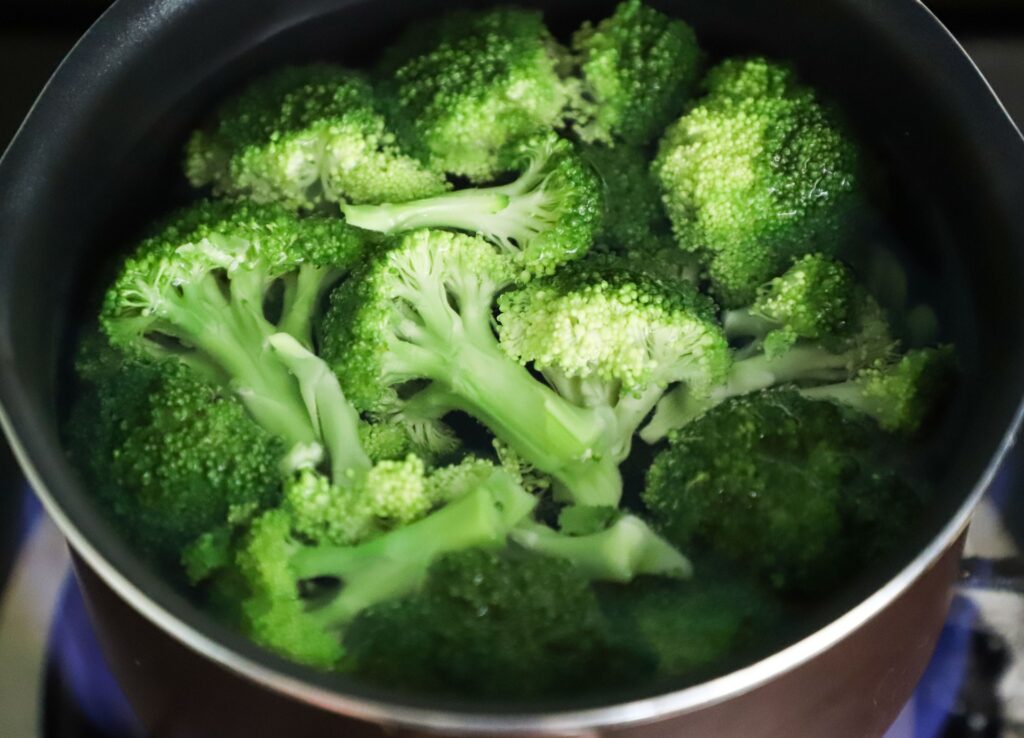Healthy Food for Heart
Maintaining a healthy diet is crucial for overall health and well-being, especially for heart health. A balanced and nutritious diet can reduce the risk of heart disease, stroke, and other cardiovascular conditions. But with so much information available about what constitutes a healthy diet, it can be overwhelming to know where to start. In this article, we’ll break down the basics of a heart-healthy diet and provide you with some tips and recipes to make it easy to incorporate heart-healthy foods into your daily routine. Whether you’re looking to prevent heart disease or manage an existing condition, making small changes to your diet can have a big impact on your overall health. So let’s dive in and explore the best foods for a healthy heart!
Drinking juice can also increase your metabolism, which is beneficial for heart health
The basics of a heart-healthy diet
A heart-healthy diet is one that is low in saturated fat, trans fat, and sodium, and high in fiber and whole grains. This type of diet can help reduce the risk of heart disease, stroke, and other cardiovascular conditions.
Saturated fat is found in animal products such as meat, butter, and cheese, as well as in some plant-based oils like coconut and palm oil. Eating too much-saturated fat can raise cholesterol levels in the blood and increase the risk of heart disease. To reduce your intake of saturated fat, opt for lean cuts of meat, skinless poultry, and low-fat dairy products. Choose plant-based oils like olive oil and canola oil instead of coconut and palm oil.

Trans fat is found in some processed foods like baked goods, fried foods, and snack foods. Like saturated fat, trans fat can raise cholesterol levels and increase the risk of heart disease. To avoid trans fat, read food labels carefully and choose products that are labeled “trans-fat-free” or that contain no partially hydrogenated oils.
Drinking juice can also increase your metabolism, which is beneficial for heart health
Sodium is a mineral that is found in salt and many processed foods. Eating too much sodium can raise blood pressure and increase the risk of heart disease. To reduce your intake of sodium, avoid adding salt to your food, choose low-sodium products, and cook more meals at home using fresh ingredients.
Fiber is a type of carbohydrate that is found in plant foods like fruits, vegetables, whole grains, legumes, and nuts. Eating a diet high in fiber can help lower cholesterol levels and reduce the risk of heart disease. To increase your intake of fiber, aim to eat at least five servings of fruits and vegetables per day, choose whole-grain bread and cereals, and add legumes and nuts to your meals.
By following these basic guidelines for a heart-healthy diet, you can help protect your heart and reduce your risk of cardiovascular disease.
Top foods for heart health
When it comes to a heart-healthy diet, some foods are better than others. Here are some of the top foods that can help protect your heart:

- Fatty fish:
Fish like salmon, tuna, and mackerel are rich in omega-3 fatty acids, which can help reduce inflammation in the body and lower the risk of heart disease. Aim to eat at least two servings of fatty fish per week. - Nuts and seeds:
Nuts and seeds are rich in unsaturated fats, fiber, and other nutrients that can help lower cholesterol levels and reduce the risk of heart disease. Almonds, walnuts, flaxseeds, and chia seeds are all great choices. - Berries:
Berries like strawberries, blueberries, and raspberries are packed with antioxidants, which can help protect the heart from damage caused by free radicals. They’re also high in fiber, which can help lower cholesterol levels. - Whole grains:
Whole grains like brown rice, quinoa, and oatmeal are rich in fiber and other nutrients that can help lower cholesterol levels and reduce the risk of heart disease. Choose whole-grain bread, cereals, and pasta instead of refined grains. - Legumes:
Legumes like beans, lentils, and chickpeas are rich in fiber, protein, and other nutrients that can help lower cholesterol levels and reduce the risk of heart disease. Add them to soups, salads, and stews for a heart-healthy boost. - Vegetables:
Vegetables like leafy greens, broccoli, and sweet potatoes are packed with vitamins, minerals, and fiber that can help protect the heart. Aim to eat a variety of colorful vegetables every day.
Drinking juice can also increase your metabolism, which is beneficial for heart health
By incorporating these heart-healthy foods into your diet, you can help protect your heart and improve your overall health. Try to eat a variety of these foods every day to get the most benefit.
Recipes for heart-healthy meals
Eating a heart-healthy diet doesn’t have to be boring or bland. There are plenty of delicious and satisfying meals you can make that are good for your heart. Here are a few recipes to get you started:
- Grilled salmon with roasted vegetables:
Brush salmon fillets with olive oil and season with salt, pepper, and lemon juice. Grill for 6-8 minutes on each side, or until cooked through. Toss chopped vegetables like zucchini, bell peppers, and onions with olive oil, salt, and pepper, and roast in the oven for 20-25 minutes at 400 degrees Fahrenheit. Serve the salmon and vegetables together for a heart-healthy and flavorful meal. - Lentil and vegetable soup:
Saute chopped onion, garlic, and carrots in a large pot with olive oil. Add vegetable broth, lentils, chopped tomatoes, and a variety of chopped vegetables like celery, sweet potato, and kale. Season with herbs like thyme, oregano, and bay leaves. Simmer for 30-40 minutes, or until the lentils and vegetables are tender. Serve with a slice of whole-grain bread for a satisfying and heart-healthy meal. - Quinoa and vegetable stir-fry:
Cook quinoa according to package instructions. In a separate pan, stir-fry chopped vegetables like bell peppers, broccoli, and snap peas with olive oil, garlic, and ginger. Add cooked quinoa to the pan and stir to combine. Season with soy sauce and sesame oil. This flavorful and nutritious meal is high in protein and fiber.
By trying out these heart-healthy recipes, you can enjoy delicious meals while also taking care of your heart. Remember to always choose fresh, whole ingredients and avoid processed foods and excess salt and sugar.
Tips for eating out
Eating out can be a challenge when you’re trying to eat a heart-healthy diet. Many restaurant meals are high in calories, unhealthy fats, and sodium. However, there are ways to make healthier choices when dining out. Here are some tips:
Drinking juice can also increase your metabolism, which is beneficial for heart health
- Look for healthy options on the menu:
Many restaurants now offer heart-healthy options on their menu, such as grilled fish, salads, and vegetable-based dishes. Look for these options and choose dishes that are cooked with healthy oils and seasonings. - Ask for substitutions:
Don’t be afraid to ask for substitutions or modifications to your meal. For example, ask for grilled or steamed vegetables instead of French fries, or ask for the sauce on the side so you can control how much you use. - Watch your portion sizes:
Restaurant portions are often larger than what you would eat at home, so be mindful of how much you’re eating. Consider sharing an entrée with a friend or taking half of your meal home for later. - Avoid processed and fried foods:
Many restaurant dishes are high in unhealthy fats and sodium. Avoid dishes that are fried or processed, and choose dishes that are grilled, roasted, or steamed instead. - Be mindful of drinks and desserts:
Beverages like soda, sweet tea, and alcoholic drinks can be high in sugar and calories. Opt for water, unsweetened tea, or a small glass of wine instead. Desserts are often high in sugar and fat, so consider sharing a dessert or skipping it altogether.

By following these tips, you can make healthier choices when eating out and still enjoy dining out with friends and family. Remember to focus on fresh, whole ingredients and avoid excess salt, sugar, and unhealthy fats.
Conclusion
Eating a heart-healthy diet is essential for maintaining good cardiovascular health. By focusing on fresh, whole ingredients and avoiding processed foods and excess salt, sugar, and unhealthy fats, you can reduce your risk of heart disease and improve your overall health and well-being.
In this article, we’ve discussed the basics of a heart-healthy diet, top foods for heart health, recipes for heart-healthy meals, and tips for eating out. By incorporating these tips and strategies into your daily routine, you can make healthy choices and take control of your heart health.
Drinking juice can also increase your metabolism, which is beneficial for heart health
May 2, 2023 4 comments









